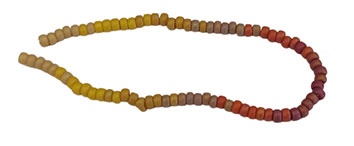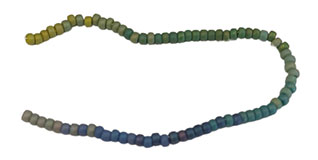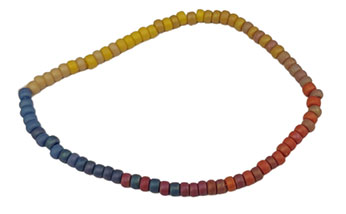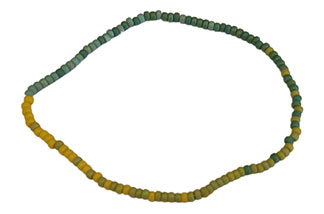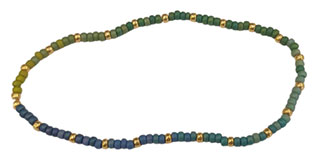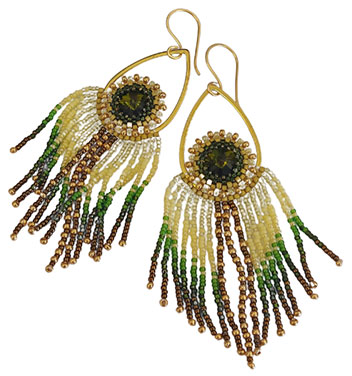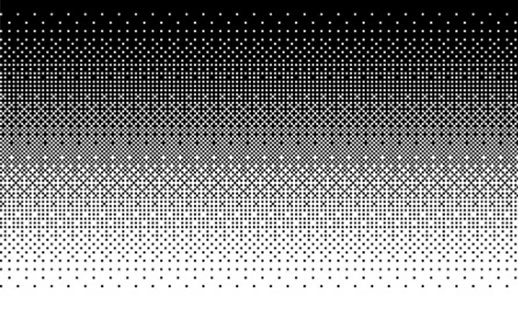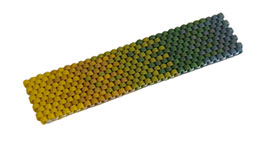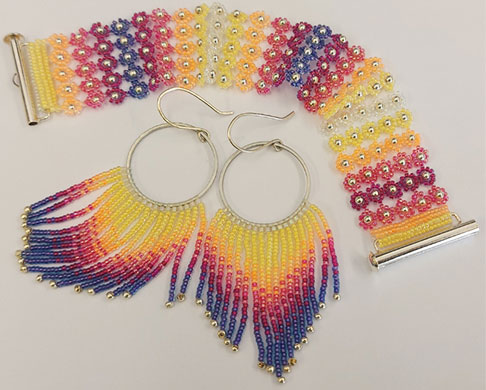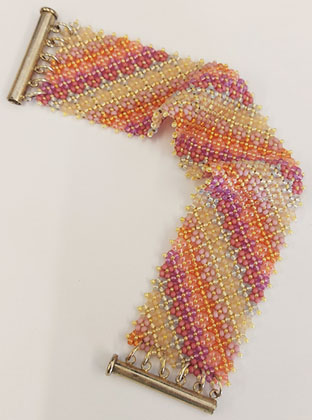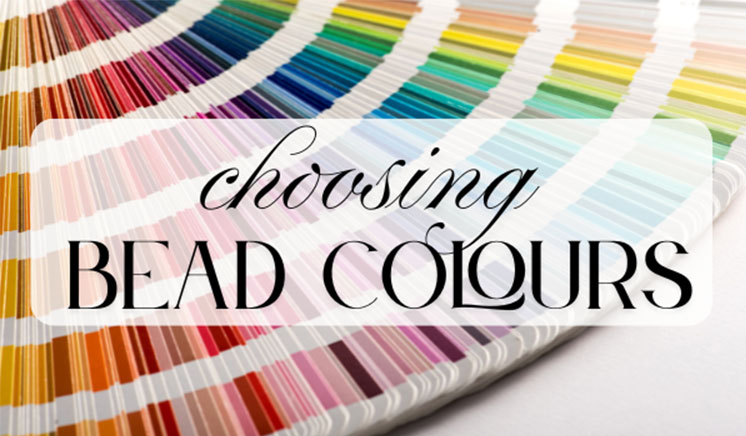

Creating visual effects with beaded jewellery can sometimes be challenging, as very often there's only a small amount of "wearable space" to make your effect work. However we beaders love a challenge, right?! And one of those visually effective challenges is the continually popular Ombré effect.
Ombré (meaning shaded in French) is where one colour hue is blended into another colour hue, usually moving through tints and shades from light to dark or vice versa. Being able to choose and use bead colours that transition smoothly creates beautifully beaded pieces that draw the eye along them.
Ombré style jewellery works exceptionally well for necklaces, flat stitched bracelets and fringe earrings, as these types of designs allow you to use many beads to build the Ombré effect more easily.
Choosing Bead Colours
Ombré effects work best when the colours seamlessly blend together from one to another. Miyuki has hundreds of beads colours to choose from to help you achieve this effect as much as possible, and here are a few points to bear in mind:
1. The more contrast you have between your bead colours, the harder it is to create a subtle effect. Soft whites, ivories, creams, peaches and golds will work well together as they are all very similar to each other. If you picked bold primary colours, you can still follow the Ombré recipes below to help transition from one colour to another but it would be a far more striking and obvious effect.
2. Use a colour wheel and follow an analogous colour scheme (the range of colours that sit next to each other on the colour wheel), as they naturally blend into each other for a more subtle and harmonious effect.
3. Use a colour wheel and pick complementary colours (colours directly opposite each other) or split-complementary colours (where you use one colour and the two colours neither side of its direct opposite colour) for a more vibrant effect.
4. Choose colours or finishes that have one thing in common to help maintain a consistency e.g. transition from light to dark blues, or from one shade of matte colours to another. Miyuki tends to number their beads in sets for a particular finish e.g. seed bead colours 0001-0030 are all a silver lined finish. If you have a range of consecutive bead numbers you should find they're all the same finish which can help form a smooth transition.
5. If you've chosen to blend blocks of colours together e.g. a range of blues or a range of greens, think about adding in gold, silver, black, white or neutral colours to break the blocks apart. You could either transition from one full block of colour to the next with a neutral spacer or create a small block of blended colours that are repeated with a neutral spacer.
Ombré Recipes With Regular Repeats
There are many different ways to transition from one bead colour to another. We've included a range of popular Ombré recipes that you could try. Usually the Ombré recipe is repeated at specific intervals along the design where you wish to transition from one colour to the next, usually at regular intervals.
Please note that A denotes the first bead colour, B the second bead colour, C the third bead colour and so on. The symbol * has been used to show where a silver or gold spacer bead has been used to help add visual interest to a design.
| A A A A A B A B B B B B C B C C C C C |
| A A A A A B A B A B B B B B C B C B C C C C C |
| A A A A A B A B A B A B B B B B C B C B C B C C C C C |
| A A A A B A A A B A A B A B A B B A B B B A B B B B |
You can also add in silver, gold or neutral colours to help add visual interest to a blend, as shown below. The symbol * has been used to denote these neutral beads:
| A B C D E F * A B C D E F * A B C D E F * |
| A A A A * A B A B * B A B B * B B B B * B C B C * B C B B * C C C C |
| A A A B B B C C C D D D * A A A B B B C C C D D D * |
| You can play around with all these combinations to come up with your own recipes to follow. You could also try using blocks of silver, gold or neutral beads to help the Ombré effect 'pop' more, as shown in these earrings. |
Ombré Effects With Dithering Gradients
It can be hard to make an Ombré effect seem random and natural as our brains like to sort and organise things into sets and patterns, hence the appeal of regular repeats. But if you're working on a larger or flatter piece, or want a more organic look to your design, a dithering gradient can help you to achieve this.
Dithering is a technique used in computer graphics to create the illusion of colour depth in images with a limited colour palette (this is called colour quantization).
Dithering allows us to use two colours to create the effect of the third colour - handy for beaders who have a limited colour range to work with.
| The most popular form of dithering is the alternation of pixels in a regular checkerboard pattern. Here, the colour grey is created by careful placement of just black and white pixels. |
However, for beading projects requiring a more organically blended look, a random approach to adding beads can work well. You can achieve this a few different ways when you're using a loom or a flat off-loom bead stitch that is worked in rows (e.g. peyote or brick stitch):
1. Try replacing the working bead colour with one or two beads of the colour you want to transition to with every new row you add. Make sure you place these new colour beads randomly to create a speckled look, as though the new colour is 'filtering in' slowly. This method can work equally well when you have a larger or longer piece of beadwork as you have lots of space to create a blended look, or if you want to transition between lots of colours in a small area.
2. Divide your loose beads into small piles, add a sprinkle of the bead colour you want to transition to, increasing the amount for each pile until they are thoroughly mixed in. This way can be helpful if you're always trying to create something that looks random but your brain constantly wants to make it look regular as the beads are already 'chosen' for you!
| Here, the transition colour beads are added one at a time for every other row of Peyote stitch, giving the piece a more organic blend in places. |
Have a go applying the Ombré design with different bead stitches to see which ones really show off the effect, as we've done in these two examples:
|
|

